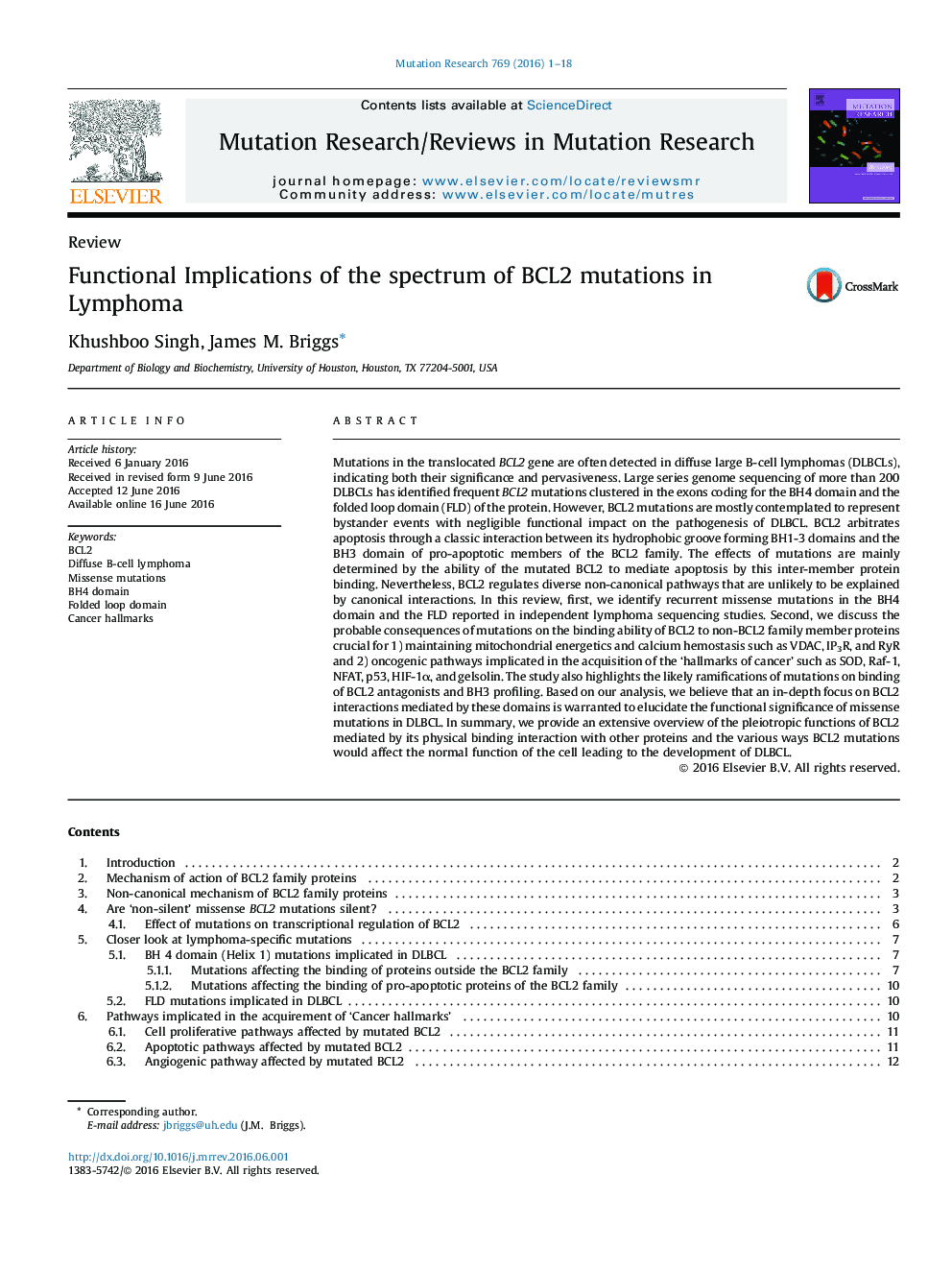| Article ID | Journal | Published Year | Pages | File Type |
|---|---|---|---|---|
| 8456703 | Mutation Research/Reviews in Mutation Research | 2016 | 18 Pages |
Abstract
Mutations in the translocated BCL2 gene are often detected in diffuse large B-cell lymphomas (DLBCLs), indicating both their significance and pervasiveness. Large series genome sequencing of more than 200 DLBCLs has identified frequent BCL2 mutations clustered in the exons coding for the BH4 domain and the folded loop domain (FLD) of the protein. However, BCL2 mutations are mostly contemplated to represent bystander events with negligible functional impact on the pathogenesis of DLBCL. BCL2 arbitrates apoptosis through a classic interaction between its hydrophobic groove forming BH1-3 domains and the BH3 domain of pro-apoptotic members of the BCL2 family. The effects of mutations are mainly determined by the ability of the mutated BCL2 to mediate apoptosis by this inter-member protein binding. Nevertheless, BCL2 regulates diverse non-canonical pathways that are unlikely to be explained by canonical interactions. In this review, first, we identify recurrent missense mutations in the BH4 domain and the FLD reported in independent lymphoma sequencing studies. Second, we discuss the probable consequences of mutations on the binding ability of BCL2 to non-BCL2 family member proteins crucial for 1) maintaining mitochondrial energetics and calcium hemostasis such as VDAC, IP3R, and RyR and 2) oncogenic pathways implicated in the acquisition of the 'hallmarks of cancer' such as SOD, Raf-1, NFAT, p53, HIF-1α, and gelsolin. The study also highlights the likely ramifications of mutations on binding of BCL2 antagonists and BH3 profiling. Based on our analysis, we believe that an in-depth focus on BCL2 interactions mediated by these domains is warranted to elucidate the functional significance of missense mutations in DLBCL. In summary, we provide an extensive overview of the pleiotropic functions of BCL2 mediated by its physical binding interaction with other proteins and the various ways BCL2 mutations would affect the normal function of the cell leading to the development of DLBCL.
Related Topics
Life Sciences
Biochemistry, Genetics and Molecular Biology
Cancer Research
Authors
Khushboo Singh, James M. Briggs,
